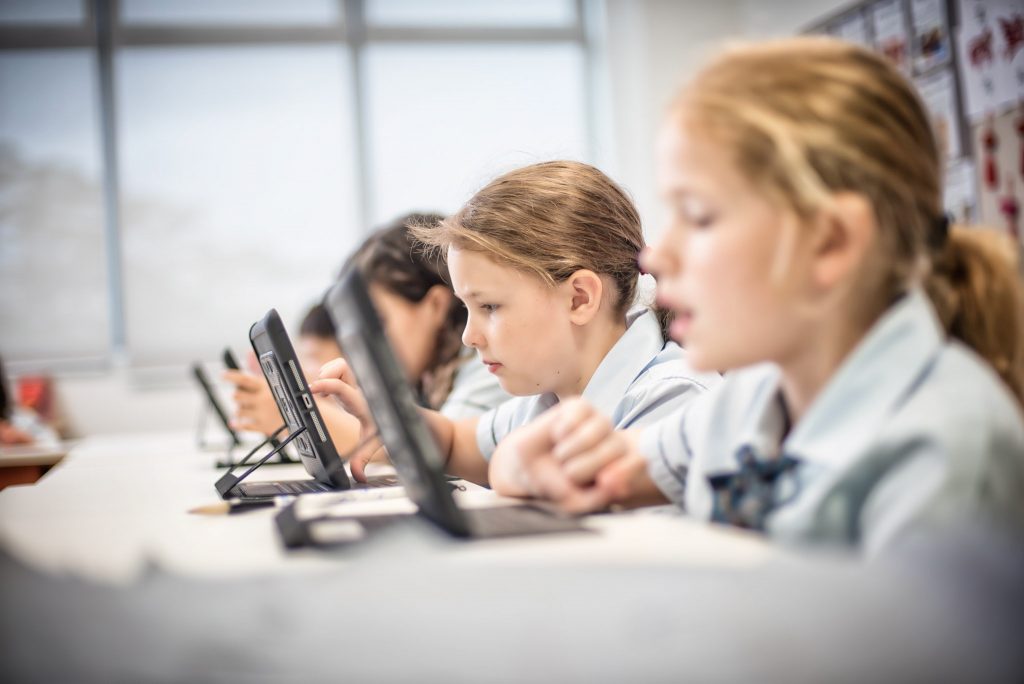- Sponsored Content

The world is shrinking around us; information is easier to access, devices are
far more portable and people are becoming more connected. For parents this
means that they are having to face the dilemma of providing online access to
their children at a far earlier age. However, how do you know if your child is
ready and what can be done to protect them when online?
This article takes a look at some of the key questions parents are asking and
practical ways to support your child online.
Is my child old enough to have an online presence?
As many of us know, age is not a great measure of maturity. In my teaching
career I have seen 10 year olds who could run multi-million dollar companies
and 18 year olds who lack all types of common sense. Unfortunately there is
no one size fits all approach to online safety, and as parents we need to use
our own judgment and understanding of our children to guide the decision
making process.
While there are many benefits for creating an online profile or email address
for your child, we must be aware of the possible dangers and remain ever
vigilant.
Some key questions to ask yourself are:
Why do I think my child needs an email address / social media account?
Firstly take some time to think about this question and write down some ideas.
Is this pressure from your child because “all my friends already have one” or
are there key educational and developmental benefits for going online now.
Is my child socially and emotionally ready?
You know your child best. If you feel that they are emotionally capable of
understanding both the benefits and risks of being online, then maybe the
timing is right. Are they socially able to communicate with others and make
decisions that will protect them from possible risks? If you feel your child
might not quite be ready then don’t feel pressured to get them online. Take
time to do your research and explain to your child the reasons behind your
decision. Rushing into online access without proper consideration and
forethought could put your child at risk.
I think my child is ready – what steps should I take now?
If you feel your child is socially and emotionally ready to join the online
community, then begin by sitting down and starting a conversation.
Remember, this is a partnership not a dictatorship.
By creating open two way communication, you are more likely to empower
your child to make the right decisions and seek support when needed. Some
steps to consider include:
Set clear expectations and guidelines
At the start of your journey it is important to sit down with your child and
discuss what the benefits and risks of going online could be. Take time to
listen to your child’s ideas and concerns, as these will help you develop
meaningful expectations as you move forward. From here work together to
create a list of mutual expectations and guidelines – it is ok that some of these
may be more beneficial to one party or the other, however the key is to
discuss and be willing to negotiate. If your child feels you understand them
and are being fair, then this process will be far easier and pleasurable.
Depending on the age of your child, you may wish to display these
expectations near the computer and use them as a common language for
discussions.
No Secret Squirrel
While we all like to have a certain level of privacy, it is important to let your
child know that internet access is a public, family affair. As parents we should
try not to be staring down the back of our child’s neck as they go about their
online business, we should make an effort to ask them about what they are
doing and take an interest in their work and achievements online. Asking
questions and giving feedback is a great way to check in with their online
activity, without becoming a member of the secret service.
Family Devices, Not Personal Devices
We all know it is important to have the home computer in a public space in the
family home. However it is now more common for family members to have a
personal device that they use. This brings with it added benefits and dangers –
so set the expectation that phones, tablets and other devices are used in a
public place in the family home. It should also be made clear that no device is
the property of one person, however they are shared family items that should
be open and usable by all.
Are certain social apps & websites safer for my child to use
There are not necessarily good and bad social apps & websites, however the
way in which they are used is what is important. Apps like Snapchat which
delete content shortly after sending, make it harder for parents to monitor
online activity and protect their children.
As a parent we should evaluate the benefits and risks of each application and
website, using our own judgement to determine child friendliness. This can be
an onerous task for parents, requiring them to install and use the app in order
to determine it’s suitability. In my opinion, Apps like Snapchat should be
reserved for young adults, with other safer and more open options being
better for younger children.
This again highlights the importance of a supportive parent/child relationship,
ensuring your child feels comfortable coming to you with questions or
problems that may arise from online activity. The same can be said for social
media sites, where there is unfortunately no such thing as a child-friendly
community. Instead it comes down to the way in which our children access
resources and the level of parental involvement.
Final advice for setting up an account for your child on social
media?
Some easy steps to follow when creating your child’s first social media profile:
- Shared Password – together choose a password for their account. Let your child know you will not login to their account unless they have not followed the expectations and guidelines you both created.
- Turn On Privacy Filters – there are lots of options for websites like Facebook. Go through all the settings and ensure your child’s account is private and only accessible by people on their friends list.
- Add Your Child As A Friend – this is a great way to keep an eye on their activity without seeming like you are snooping. It also might strengthen that relationship and create more opportunities to talk and share idea.
- Have Some Down Time – we all know devices and social media can be addictive. Make sure you set aside time to turn off devices, have a family conversation, read a book or play outside.
- Research – check out all the wonderful resources available online such as https://www.commonsensemedia.org/ for an extensive range of information, guides and suggestions.
Remember technology can be a powerful tool but requires careful planning
and open dialogue for all parties.
By Jay Thompson, Educational Technology & Innovation Coordinator at
GEMS World Academy (Singapore)










